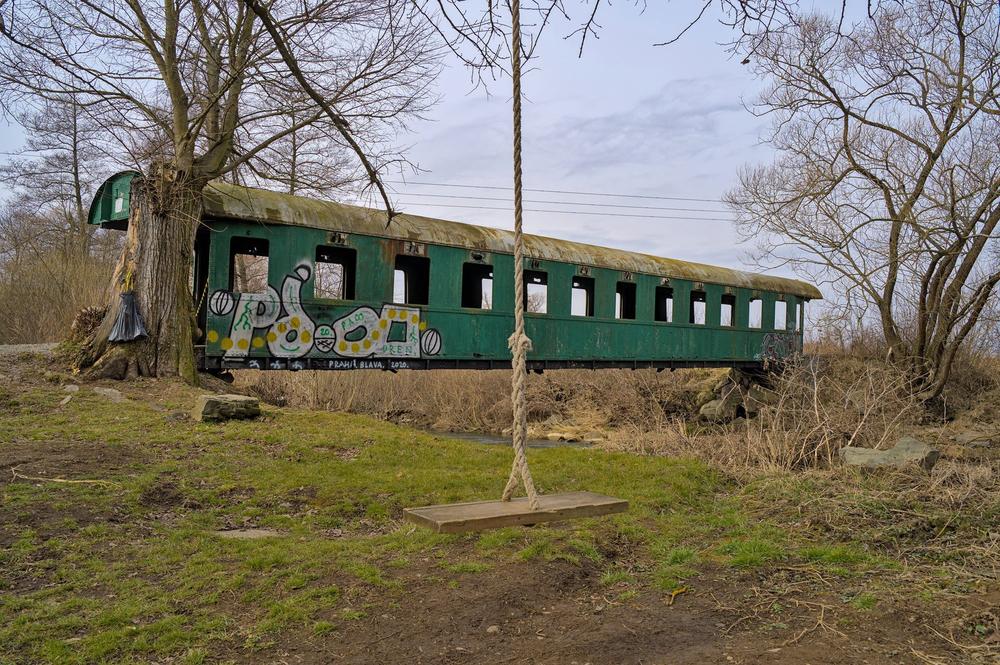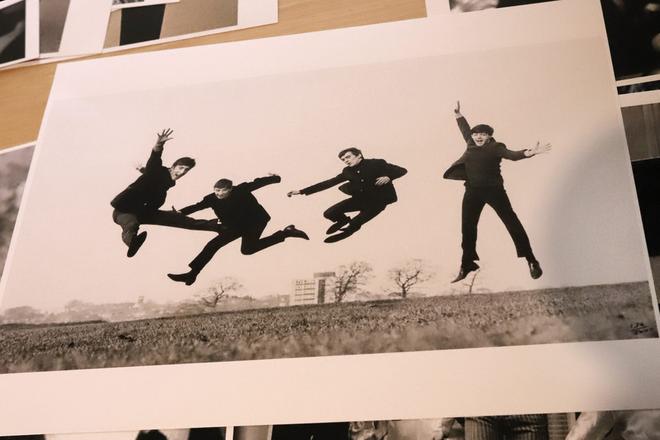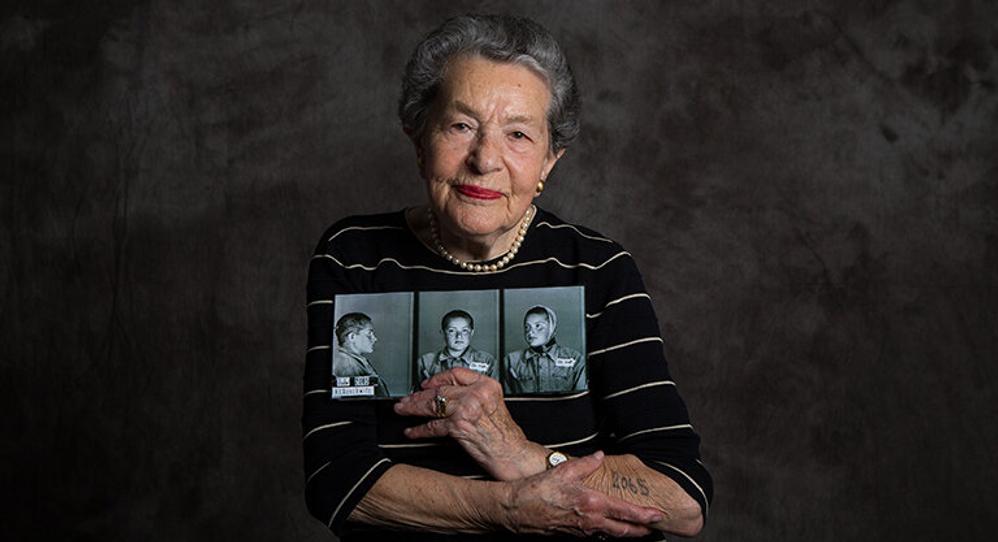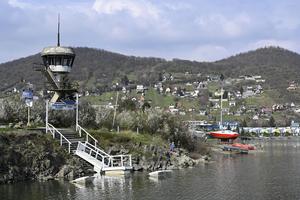Hello from The Slovak Spectator,
This week, we are celebrating the lives of three exceptional women who are no longer with us: singer Hana Hegerová, Holocaust survivor Lotte Weiss, and Roma writer Elena Lacková.
Also, US writer Lev Golinkin tells The Slovak Spectator Editor-in-Chief Michaela Terenzani how Slovakia could remove Nazi monuments in a creative way.
And we will try to catch a Slovak phrase used in one of The Beatles hits as well. But we are first going to start with a song about alpine skier Petra Vlhová.
Song written for skier Petra Vlhová
Smola a Hrušky has released the Snehová kráľovná (Snow Queen) song celebrating Petra Vlhová, Slovakia’s most successful alpine skier of all time and the 2021 overall World Cup champion. Have a listen.
Hana Hegerová, dubbed Czechoslovak ‘Édith Piaf’, now sings in heaven
A Czechoslovak music icon, Hana Hegerová, who came across success as well as professional and personal setbacks in her outstanding career, has died at the age of 89 in a Prague hospital following health problems unrelated to Covid.
Hegerová, whose real name was Carmen Farkašová-Čelková, was born in 1931 in Bratislava. Under communism, she was not allowed to study at an economics university and thus became a teacher and a factory worker, which she did not enjoy. Looking for a more interesting way to spend her time, she took up a theatre course.
She started her career at theatres in Bratislava and Žilina. At that time, Hegerová decided to change her real name due to worries that people would consider her a bad actor, and she did not want to butcher the unusual name Carmen associated with the opera.
“Hana is a very common name in Slovakia, and I wanted to have a very common name,” she told the BBC in 2002.
Her path to fame really began through her work in Prague theatres. In the late sixties, a head of the Olympia musical hall in Paris saw Hegerová perform in the Czechoslovak capital and offered her a short-term stay at his theatre. French critics soon dubbed her as the Édith Piaf from Prague, unlike some Czech journalists who saw her as a sad lady due to her chansons. Good at languages, she also performed in Germany.
Nevertheless, the previous regime often banned her from playing shows. In 1980, big money was sent to her account by mistake, which Hegerová considered to be her pay for gigs in Germany. Convicted of fraud, communists put her in prison for six months. The singer never talked about it as the darkest time of her career, though.
“When you get out of some trouble, it will enrich you with a huge experience, and I also learnt great things there, which I would not otherwise try,” Hegerová told the BBC.
Hegerová returned to stage in 1983, four years later she recorded the album Potměšilý host (Sly Guest). The song Levandulová (Lavender) off the record became her biggest hit. Many also know songs Čerešne (Cherries), Milord, and Žila som správne (I Lived the Right Way).
The first lady of Czechoslovak chansons, who was awarded several state honours in the previous years, ended her long fruitful career in 2011 due to health problems. However, she never considered herself a good singer.
“It was a complete coincidence that I eventually became a singer,” the humble lady, who also gave rapping a go a few years back, used to say.
Travel ideas
Out of four gates, one remains
Bratislava’s thick-stone city walls were demolished in 1775 upon Maria Theresa’s order. Remains of the fortification are seen alongside Staromestská Street. Four gates were incorporated into the whole system, but only St Michael’s Gate stands today.
Where does the Košice Philharmonic Orchestra play?
The orchestra is housed in Dom umenia, which translates into English as the House of Arts. The building is a former synagogue, which also served as a corn house from 1949 to 1958. To become a music venue, the synagogue had to be extended.
 This unusual bridge can be found in the village of Vígľaš – Pstruša, near Detva. The wagon runs across the Slatina River connecting two parts of the village. (source: Facebook/Dodo Martinský)
This unusual bridge can be found in the village of Vígľaš – Pstruša, near Detva. The wagon runs across the Slatina River connecting two parts of the village. (source: Facebook/Dodo Martinský)
Some Gemer churches nominated for European Heritage Label
Churches in the Gemer region have a chance to earn the European Heritage Label for its Italian frescoes. To receive the label, the churches must prove they have played an important role in the development and growth of Europe.
Bratislava-born Auschwitz survivor dies in Sydney
Born in 1923 in Bratislava, the Holocaust survivor Lotte Weiss (Charlotte Frankl), who spent long years sharing her story with young people in the Land Down Under, has passed away, as reported on social media by the Slovak embassy in Australia.
Soon after deportations of Jews from Nazi Germany’s puppet Slovak state began in late March 1942, Weiss was forcibly taken with her two sisters Lilly and Erika to Auschwitz.
“…there was a knock on our door. When my father opened it, three guards stood there with the summons for the three eldest girls in the family. Lilly, Erika and I were in the age group they wanted, between 18 and 25 years…” Weiss writes in her 2003 memoirMy Two Lives. “We were ordered to make our appearance at 7 am the next morning in an old magazine factory, situated about six kilometres from the city. Everything was happening so quickly. It was like a series of explosions.”
The rest of her family were deported to the death camp a few months after. She was the only one from her family to survive three years of horrors and trauma experienced in camps, where she became a number – 2065.
In the book, she also describes her arrival to Auschwitz: “…We did not move fast enough for them and they shouted at us, ‘Raus, raus, (out, out) you Jewish pigs. Quicker, quicker. Hurry up or you will be shot’. Eventually, we were all out and assembled for our march to the Auschwitz concentration camp. Little did we suspect what was waiting for us…Stripped bare, shaving off any hair left us feeling less than even a number!”
Weiss continues to describe, in her work, all the Auschwitz horrors, how she lost her sisters, suicidal thoughts, and her fight for survival in other death camps. But the book also contains happy childhood memories such as the Sokolovňa outdoor coffee house and walks to the Murmansk Lookout above Bratislava, as well as her return to the city after the war.
In 1949, a year after communists usurped power in Czechoslovakia, Weiss and her husband Ali immigrated to Wellington, New Zealand, to begin a new life, recounting the horrors she had experienced in the camps, and in 1986 to Sydney.
“Her most precious stage was as a guide at the Sydney Jewish Museum where she could be found every Sunday morning – sharing her story with thousands of visitors – many of whom came back years later because of her,” said Rabbi Levi Wolff in a eulogy for Weiss.
One of them was Australian actor Nicole Kidman.
In 2014, in a video, she expressed her hope that people would learn “how important it is to be humans and to try to help whenever you can and not to destroy people because of their religion or their standing.”
Lotte Weiss died on February 12, aged 97, in Sydney.
Weekend reads
Google pays tribute to Slovakia’s first Roma writer
Google paid homage to Elena Lacková, the first Slovak Romani writer and the first Romani woman in Slovakia and the Czech Republic to graduate from a university – at 48, with the illustrated redesign of its logo by Czech artist Filip Pošivač. The writer, who also founded the first Romani amateur theatre, was born near Prešov 100 years ago.
Producing literature is very important for every nation – it is also needed for the Roma nation. I believe in the power of Roma life and the power of Roma literature.“
How to get rid of Nazi statues, without helping the far right
US writer Lev Golinkin, who has covered stories about far-right groups and white supremacists, published a database of monuments to Nazi collaborators put up in a number of countries. Most were erected in the past 20 years and in eastern Europe, including Slovakia. The question is how to replace them with true heroes?
Throwback: Nearly forgotten Da Vinci of Bratislava
Wolfgang von Kempelen invented several engineering works, including steam machines and entertaining inventions, and he also helped people living with disabilities. On top of that, this gifted Bratislavan was a successful playwright. His legacy is today represented in the form of a statue. Von Kempelen died on March 26, 1804.
In brief
SPACE: At Baikonur Cosmodrome, Kazakhstan, a Soyuz rocket was launched on March 22, delivering a cluster of 39 small satellites, cubesats and nanosats from almost 20 countries, including Slovakia, to three different orbits.
MUSIC: The Košice Philharmonic Orchestra has released an album marking the 75th anniversary of the end of WWII. For this purpose, the orchestra chose a symphonic triptych titled About the Life of Composer Ján Cikker, recording his WWII-themed symphonic poems Summer, Soldier and Mother (Battle), and Morning.
THEATRE: World Theatre Day falls on March 27. Read this year’s message by the Oscar winning actress Helen Mirren. Do not forget you can enjoy English language plays even in Slovakia. Bridgin’ Drama and ActofKAA are two Bratislava-based theatre projects performing in English.
WARHOL: The Andy Warhol Museum in Medzilaborce has launched a new online project named FACTORY PEOPLE, which presents key people who worked at Warhol’s Silver Factory in the sixties.
REMIX: Producer Peter Šafránek, as part of his project Lolokar, decided to remix songs from the popular TV programme Zlatá brána (Golden Gate), broadcast in the seventies and eighties. The first remixed song is called Moja mama (My Mother) from 1977.
CHILDREN: A new playground castle is being constructed in Kollárovo near Komárno. It will resemble an old Hungarian fortress, which is located in the Hungarian town of Tata. Other playgrounds resembling old constructions also stand in Komárno, Nové Zámky and a few other settlements.
Slovak in The Beatles’ Yellow Submarine
During his life, Slovak photographer and cameraman Dežo Hoffmann, born in Banská Štiavnica, had an amazing career, which ended in March 35 years ago.
After studies in Prague, he went to Paris and was sent to make a documentary about Mussolini’s invasion of the Ethiopian Empire and the civil war in Spain in the thirties, where he got to know Ernest Hemingway. After the war he ended up in London. There he started working for the magazine Record Mirror. In 1962, he travelled to Liverpool to take pictures of an unknown band named The Beatles. He soon began to work with them on a regular basis.
The funny fact is that listeners to the 1966 Yellow Submarine song can hear Slovak in it. Hoffmann shouts: “Môžete mi vylízať!” (Lick my a…), which was meant to be a message for communists in Czechoslovakia.
It is also worth mentioning he took pictures of other celebrities, including Marilyn Monroe, Frank Sinatra, Charlie Chaplin, Sophia Loren, and the likes.
Today, you can visit the Dežo Hoffmann Museum in Banská Štiavnica, which opened in 2019. However, it is now time to listen to the song. Can you catch the Slovak bit in it?
That is it for this week, but I will be back with another Spectacular Slovakia weekly roundup next Friday. See you then.
- Peter @PeterDlhopolec
Have you got any questions? You can reach Peter at peter.dlhopolec@spectator.sk.



 Slovak photographer Dežo Hoffmann worked with The Beatles regularly. (source: TASR)
Slovak photographer Dežo Hoffmann worked with The Beatles regularly. (source: TASR)
 Lotte Weiss holds her concentration camp mugshot, taken in Auschwitz, June 20, 1942. (source: Sydney Jewish Museum)
Lotte Weiss holds her concentration camp mugshot, taken in Auschwitz, June 20, 1942. (source: Sydney Jewish Museum)


